CellufineTMPhosphate
For purification of nucleic acid-binding proteins such as T7 RNA polymerase, which is an enzyme for synthesizing mRNA drugs
Cellufine Phosphate is an affinity media designed for concentration, purification of proteins and, enzymes such as nucleic acid related proteins. Base of media is spherical and rigid cellulose functionalized with Phosphate esters. T7 RNA polymerase, which is a synthase of mRNA drugs, is a nucleic acid-binding protein. So it can be efficiently purified by cellufine Phosphate.
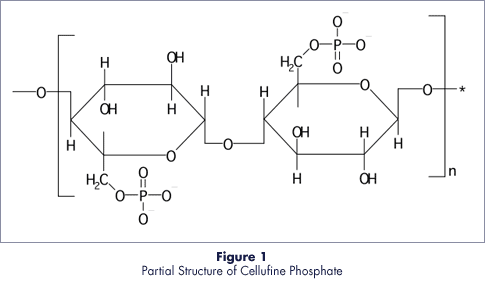
| Characteristics | |
|---|---|
| Support Matrix | Cellulose |
| Ligand | Phosphate ester |
| Ligand conc. | 0.3 - 0.8meq/ml |
| Adsorption Capacity | ≧ 20mg/ml-gel (lysozyme) |
Purification example of T7 RNA polymerase
T7 RNA polymerase is a important RNA synthase used to synthesize mRNA from template DNA in in vitro transcription. In this study, high-purity T7 RNA polymerase was purified by a two-step chromatography step of first performing crude purification with Cellufine MAX DEAE and then performing affinity purification with Cellufine Phosphate.
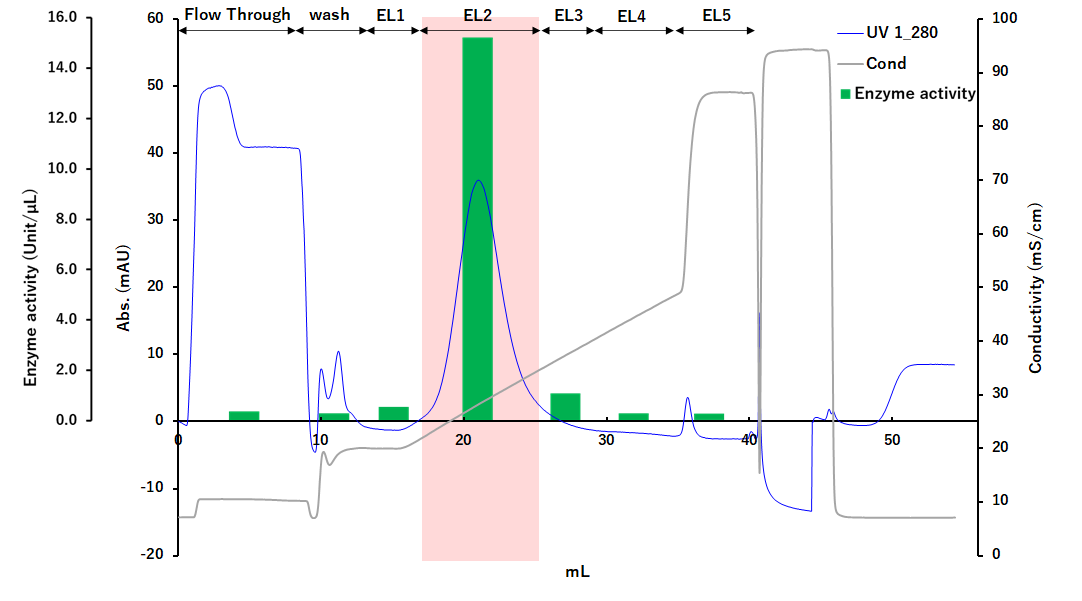
After purifying with Cellufine MAX DEAE, elution faction is purified with Cellufine Phosphate. T7 RNA polymerase is accumulated in the EL2 fraction displayed in red.
| Fraction | Enzyme activity (Unit/protein) |
Enzyme recovery (%) |
Protein recovery (%) |
| load sample | 94043 | 100 | 100 |
| Flowthrough fraction | 2763 | 1.8 | 59.8 |
| Elution fraction | 267034 | 70.2 | 24.7 |
Table 1 shows the enzyme activity and protein recovery after column purification with Cellufine Phosphate (Figure 1). The activity of T7 RNA polymerase in the eluted fraction was as high as 70.2%. The amount of protein was reduced to 24.7%, indicating that contaminants were efficiently removed.
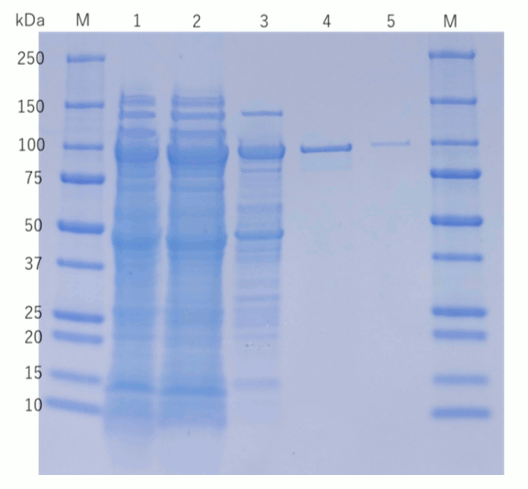
1: Lysate, 2: Ammonium sulfate precipitation, 3: Elution fraction of Cellufine MAX DEAE, 4: Elution fraction of Cellufine Phosphate, 5: Control
The degree of purification was evaluated by SDS-PAGE using fractions obtained from each purification process of Cellufine MAX DEAE and Cellufine Phosphate. Each step of chromatography removes contaminants and at the stage of Cellufine Phosphate, the T7 RNA polymerase can be purified to near single band.
Pore size of Cellufine Phosphate
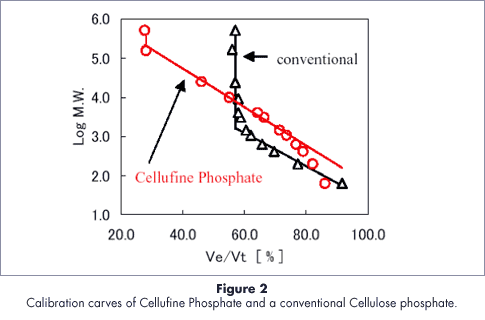
C.I.P. Stability test
Cellufine Phosphate is stable to cleaning in place (C.I.P) by alkali.
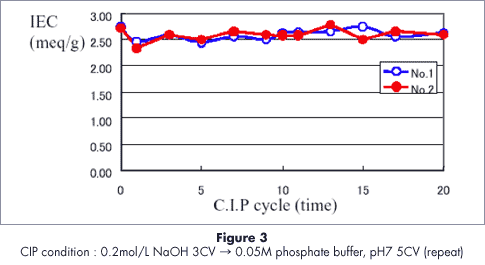
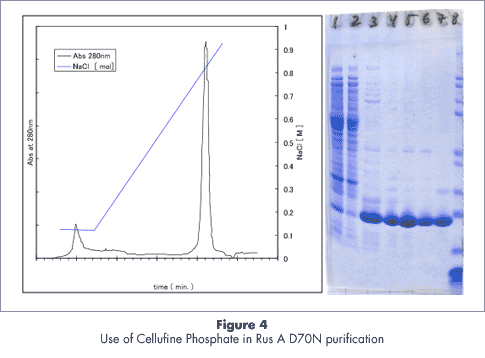
Chromatography
- Column
- 1.6x10cm (20ml) packed with Cellufine Phosphate
- Flow rate
- 3ml/min( 90cm/h )
- Sample
- 7.5mg of RusA D70N obtained after Heparin-Sepharose chromatography
- Gradient
- 200ml from 0.1 to 1.3M NaCl in 50mM tris-HCl pH 8.0
SDS-PAGE
- Gel
- Novex 4-12%BT gel used with MES-SDS running buffer (Invitrogen)
- Key for gel
- 1 Cell free extract
2 Unbound material from Heparin-Sepharose column
3 RusA sample obtained from Heparin-Sepharose column
4-6 Fractions across the peak eluted from Cellufine Phosphate
7 RusA reference sample
8 Mark 12 MW standard (Invitrogen)
Ref.
Nucleic Acids Research, 2006, Vol. 00, No. 00 1–8
Rachel Macmaster, Svetlana
Sedelnikova, Patrick J. Baker, Edward L. Bolt1,Robert G. Lloyd1 and John B. Rafferty
RusA
Holliday junction resolvase: DNA complexstructure—insights into selectivity and
specificity
This data was carried by courtesy of Dr. Svetlana Sedelnikovaof the Sheffield university.
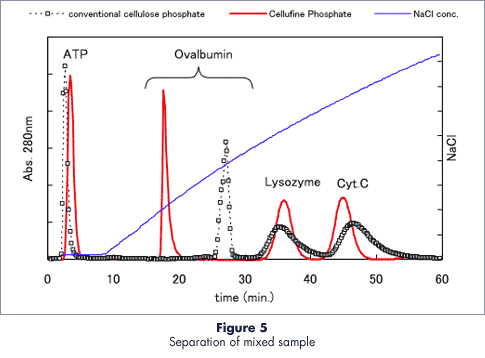
- Column Size
- ID 1.1 cm – Height 10 cm
- Flow rate
- 2 ml/min (126cm/h)
- Buffer
- 0.01M acetate buffer, pH4.8
- Elution
- 0 to 1 mol/L NaCl gradient
